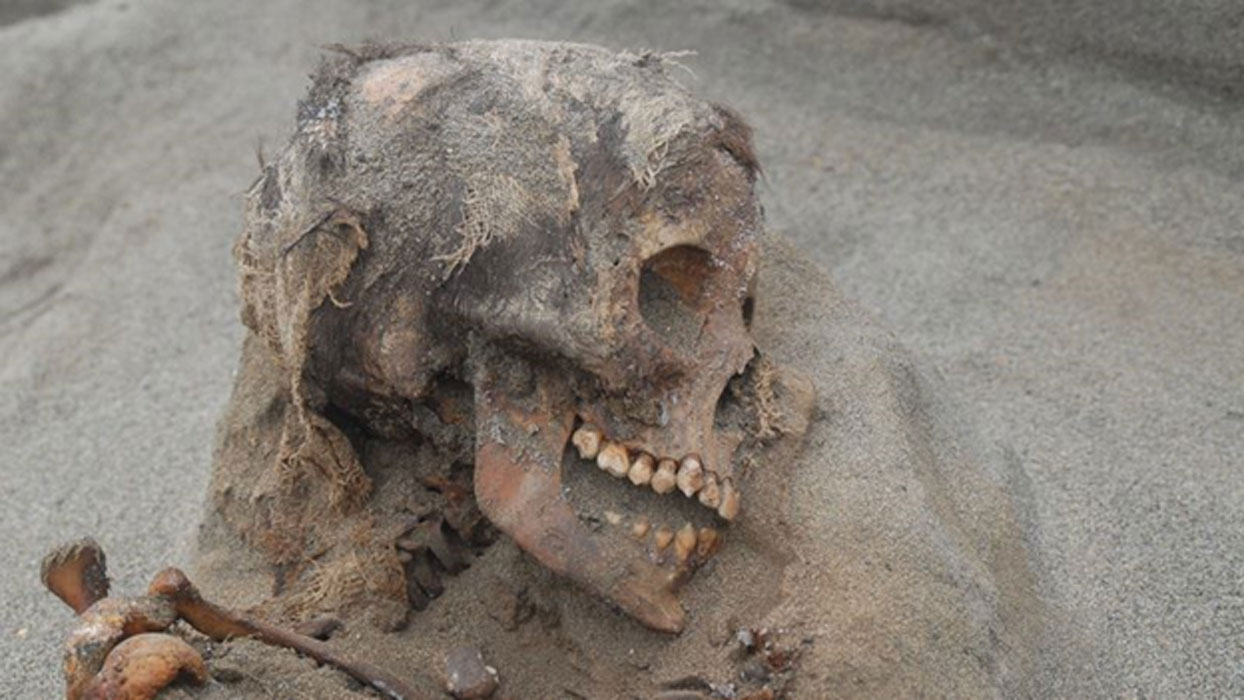Hundreds of Children were Sacrificed in Peru, But Why?
Archaeologists and anthropologists excavating in the north of Peru have made the horrifying discovery of more than 227 child burials near Huanchaco. This is added to the “140 children, three adults, and at least 200 young llamas” that were found in the Huanchaquito-Las Llamas site in March. All were ritually sacrificed by the Chimú culture.
The huge number of sacrifices has led chief archaeologist at the site, Feren Castillo, to say, “This is the biggest site where the remains of sacrificed children have been found […] It's uncontrollable, this thing with the children. Wherever you dig, there's another one.”
The Huanchaquito-Las Llamas Site
The Chimú culture flourished along the coast of Peru from about 900 until 1470 AD, at which time they were conquered by the Inca empire. A scientific paper published in March in PLOS One details the results of recent excavations at the Huanchaquito-Las Llamas archaeological site, where "evidence of a previously unknown ritual involving a massive sacrifice of 140 children and 200 young camelids (llamas) by the Chimú State, c. AD 1450.”

Map of the north coast of peru showing the extent of the chimú state and the geographic location of the huanchaquito-las llamas site. (© 2019 Gabriel Prieto et al / Plos ONE)
Huanchaquito-Las Llamas is located in the Department of La Libertad, Province of Trujillo, District of Huanchaco, in northern coastal Peru. A 2014 Ancient Origins article told the story of villagers in the coastal village of Huanchaquito noticing “bones poking up out of the sand, just 100 yards from the beach.”
At the time, Gabriel Prieto, a professor of archaeology from the National University of Trujillo discovered the remains of “43 children and 74 llamas” in burial pits which suggested they had been sacrificed in a religious ceremony.
- Cochasquí: The Immense Pyramids of Ecuador Provide Evidence for a Forgotten Civilization
- Inca Empire Constructed Over 40,000 Kms of Roads and Superhighways in 100 Years
- A Matter of Honor? Evidence of Brutal Child Sacrifice Surfaces in Ancient Mesopotamia

A typical child burial laying on its back with the legs flexed and cloth over the head. (© 2019 Gabriel Prieto et al / Plos ONE)
According to a report in The Los Angeles Times, the archaeological site is one of the largest known cases of mass child sacrifice ever seen in the Americas, and Gabriel Prieto said the discovery “shocked him and his colleagues”, and he added “there were so many skeletons and they were all children… It was astonishing.”

A shocking number of children’s bodies have been found. (© 2019 Gabriel Prieto et al / Plos ONE)
Evidence of Child and Animal Sacrifice
The Chimú people were master agriculturalists that installed a sophisticated network of hydraulic canals to bring water from mountains to irrigate fields and to supply fresh water to palaces and gardens, plazas and temples. The PLOS One paper says:
“Preliminary analysis suggests that humans and camelids were buried following a strict order in which most of the children faced to the northwest (the sea) and camelids toward the mountains.”
Wrapped in plain woven cotton shrouds, the children were often buried in groups of three and some had their “faces painted with a red cinnabar-based pigment.” Others were found wearing cotton headdresses. The children all appear to have been killed with a single horizontal slice across the sternum and many of the children’s “rib cages appear to have been pried apart” which suggests to the scientists that their hearts were probably removed shortly after death.
John Verano, an anthropologist at Tulane University in New Orleans and one of the leaders of the research paper said, “We can’t prove it, but certainly in the Mayan world they described the importance of taking out a heart that was still beating.”

A light-brown camelid laying on top of a human body. (© 2019 Gabriel Prieto et al / Plos ONE)
What Might Drive the Chimú to Sacrifice their Children?
Little is known of the Chimú people’s religious belief system as they didn’t keep written records and their art is highly symbolic and stylized. Thus, it had always been something of a mystery as to “why” the children and llamas had been sacrificed. However, researchers have noted that the children and llamas were buried “in a thick layer of mud that lay on top of the sand” suggesting the sacrifices “occurred after heavy rains caused flooding and mudslides in the area.”
The northern coast of Peru is very dry in general, but El Niño climate conditions can bring unexpected heavy rains and flooding. Perhaps the sacrifice was designed to stop the rains? Castillo suggests that “They were sacrificed to appease the El Nino phenomenon,” which follows the popular view.
However Haagen Klaus, an anthropologist at George Mason University in Fairfax, Va., has previously told reporters at the Los Angeles Times that “he had little doubt that the sacrifice was a response to the rains.” It was believed that the ancestors controlled water supplies and offerings were made to appease the ancestors, “to bring the world back into balance” added Klaus.
Prieto said that while “We’ll never know the true meaning of this sacrifice,” he agrees that excessive rain fall destroyed the economy and the political structure of the Chimú and “the sacrifice was their reaction.”
And it appears that child sacrifice was widespread as Prieto has started excavating another site at nearby Pampa La Cruz, where he has already found “132 kids and 250 llamas.” It seems likely the number of child sacrifices found linked to the Chimú culture will continue to grow.
Top image: Skull of a child sacrifice at Huanchaquito-Las Llamas in Peru. Source: © John Verano/ Plos ONE
By Ashley Cowie



















